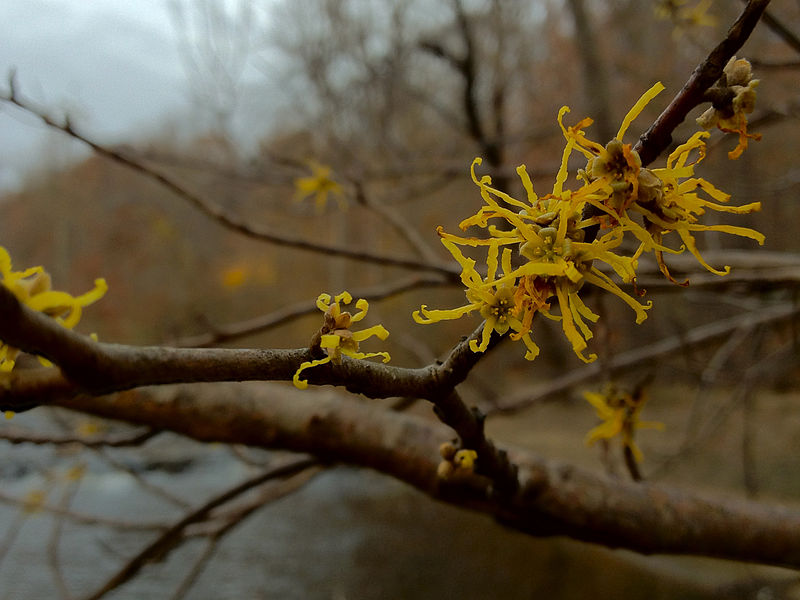Witch hazel (Hamamelis virginiana) is a native shrub that blooms in the fall and is the source of the witch hazel that is used medicinally. The witch hazels that you see blooming in the winter are from Asia (China and Japan) and are not used medicinally.
Native Americans used witch hazel’s astringent qualities for tumors, swelling and inflammation. The astringent properties are the result of tannins which are toxic so it is important that you never eat or drink anything containing witch hazel. Witch hazel is not absorbed through the skin so it is safe to use it topically. The Native Americans made a decoction by boiling the stems of the plant. European colonists were quick to adopt this medicinal shrub for use in treating various skin ailments.
The branches are used for dowsing, sometimes referred to as “witching for water”. Dowsers use either a forked branch or two separate branches held parallel when searching for underground sources of water. It is believed that when water is present underground, the forked stick will point downwards towards it or the two separate branches will cross when they sense water.
Witch hazel is considered either a large shrub or a small tree. It can grow to 15 to 30 feet high and 15 to 25 feet in diameter. It is hardy in zones 3 through 8. It grows best in full sun but can tolerate some shade. In its natural environment, it is an understory plant. Witch hazels need acidic, well-drained soil. They are often found growing near blueberries, another acid loving plant.
The flowers are yellow and appear from October to December sometimes persisting after the leaves have fallen. The leaves and seeds are important food sources for native animals, birds and insects. Most people plant witch hazel for its ornamental value.
Pruning, if needed, should be done in the spring. Witch hazel spreads by suckering, so be sure to remove the suckers to prevent your shrub from becoming invasive.

